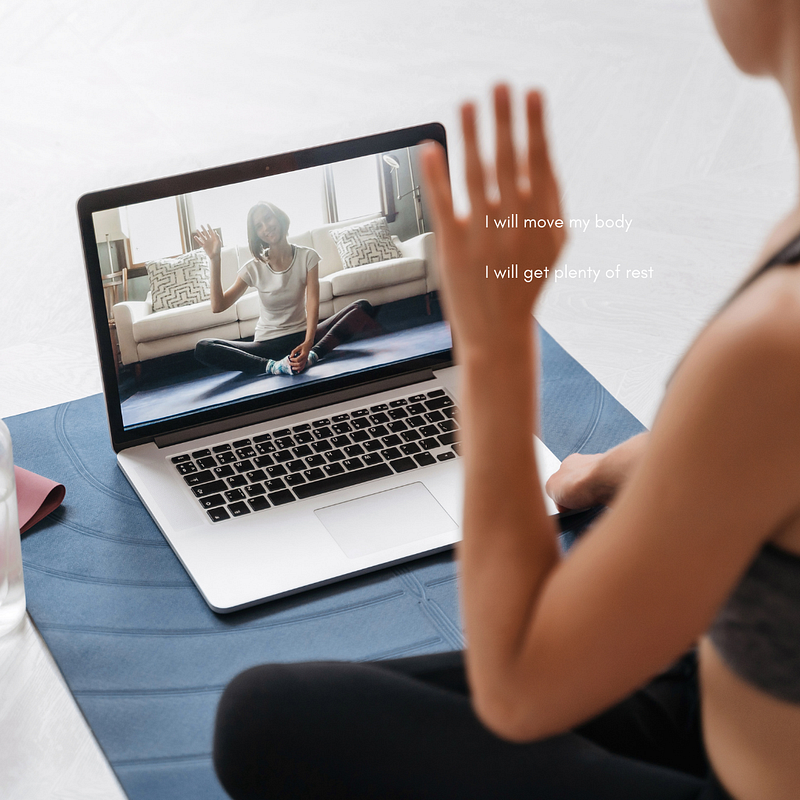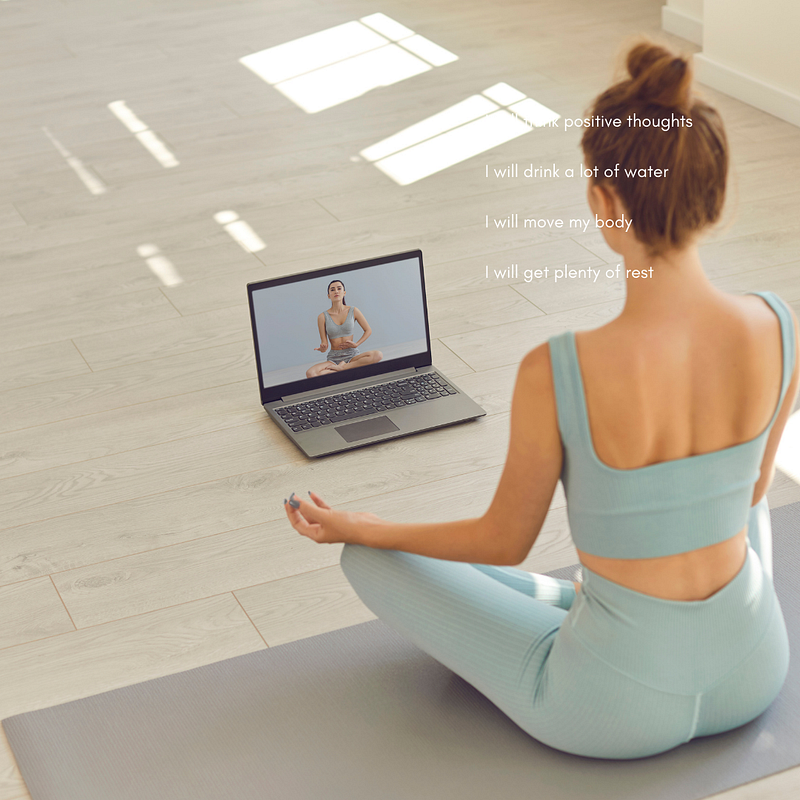- Dr. Canute Brooks Newsletter
- Posts
- Virtual Wellness Coaching: Future Trends to Watch
Virtual Wellness Coaching: Future Trends to Watch
The Future of Virtual Wellness Coaching
When we look around it's clear that the world of wellness coaching is changing fast. It’s all about personalized, easy-to-access, and tech-based solutions. As virtual wellness coaching grows, leaders set the stage for its future. We’ll look at the main trends and tech advancements that are changing how we reach our health and fitness goals from afar.

Wearable devices and AI coaching are becoming part of virtual wellness. So are immersive virtual reality experiences. Technology is helping wellness experts give clients custom plans, feedback in real-time, and convenience we never thought possible. Let’s dive into these exciting changes and see how they’ll shape the future of virtual wellness coaching. They’re set to help people reach their health and well-being goals.
What is Virtual Wellness Coaching?
I attended a virtual seminar centered around the future of wellness coaching and the takeaway from the seminar was that Virtual wellness coaching is the future. Below is an outline of the topics discused.
Virtual wellness coaching uses digital tools to help people with health, fitness, and lifestyle. It’s a new way to get support without meeting in person. This makes it easier for people to focus on their well-being.
Defining the Concept
Virtual wellness coaching connects coaches and clients with video calls, apps, and websites. It lets people get help with their health whenever they can, no matter where they are.
Benefits for Clients and Coaches
Virtual wellness coaching has many benefits for both sides. Clients get easier access, more personal help, and save money. Coaches can help more people and work from anywhere. This helps everyone work together better to reach their health goals.
Benefits for Clients Benefits for Coaches Increased accessibility to wellness services Ability to reach a wider client base Personalized attention and tailored programs Flexible scheduling and work-life balance Cost-effective solutions for wellness support Reduced overhead and travel costs Convenience of remote coaching sessions Opportunity to leverage digital tools and technologies
As more people want health and wellness help, virtual coaching is becoming key. It lets people improve their health from home.
Technological Advancements Driving Virtual Coaching
Virtual wellness coaching has grown thanks to new tech. Tools like video conferencing and coaching platforms have changed the game. They let wellness pros connect with clients in new ways.
Video conferencing tools like Zoom and Skype are key. They let coaches and clients meet face-to-face, even when apart. This makes virtual coaching a great option for many.
Digital tools for wellness are also important. Software and apps for online fitness offer cool features. They help coaches create fun, personalized plans for clients.
Technology in Virtual Coaching Benefits Video Conferencing Enables face-to-face sessions, and enhances personal connection Digital Tools for Wellness Provides features like exercise libraries, progress tracking, and virtual workout environments Specialized Coaching Platforms integrate various technology in virtual coaching tools, streamline the coaching process
Specialized coaching platforms have also helped virtual coaching grow. They bring together many technologies in virtual coaching tools. This makes it easier for coaches to manage their work and help clients.
“The integration of technology in virtual coaching has revolutionized the way we approach wellness. It has opened up new possibilities for coaches and clients to connect, collaborate, and achieve their goals.”
As technology in virtual coaching keeps getting better, wellness coaching will keep getting more digital. By using these digital tools for wellness, coaches can help more people. They can help people live healthier, more balanced lives.
The Rise of Personalized Wellness Programs
Virtual wellness coaching is becoming more popular. This has led to a growing need for personalized wellness programs. Coaches use data, artificial intelligence, and insights to create plans that meet individual needs and goals.
Tailored Approaches for Optimal Outcomes
Personalized wellness programs offer more than generic solutions. They allow coaches to create customized health coaching plans for each client. By looking at a client’s health data and lifestyle, coaches can make programs that help achieve long-term success.
The use of data-driven fitness guidance has changed the game. Wearable devices and apps give coaches real-time data on clients’ activity, nutrition, and well-being. This helps coaches make precise adjustments to the program, ensuring clients reach their goals.
“Personalized wellness programs are the future of virtual coaching. By tailoring our approach to each individual, we can help clients overcome their unique challenges and unlock their full potential.”
Key Benefits of Personalized Wellness Programs Traditional Wellness Programs Personalized Wellness Programs Motivation and Engagement One-size-fits-all approach can be demotivating Tailored to individual needs and preferences, leading to higher engagement and commitment Measurable Outcomes Difficulty tracking progress and success Data-driven insights enable coaches to monitor progress and adjust the program accordingly Long-term Sustainability Clients often struggle to maintain lifestyle changes Customized programs are more likely to result in lasting behavioral changes
Integrating Wearable Devices and Health Tracking
The use of wearable technology in wellness coaching is changing how we coach online. Coaches now use health data in virtual coaching to give better advice and support. They use real-time fitness tracking from devices to understand clients’ activity, sleep, and health better.
Wearable techs like fitness trackers and smartwatches work with online coaching platforms. This lets coaches see health data live. They can then tailor plans, set goals, and track how clients are doing.
These tools also help clients stay on track. They can see their progress and stay motivated. This makes their wellness journey more effective.
Wearable Device Key Health Data Tracked Benefits for Virtual Coaching Fitbit Charge 5 Heart rate, sleep quality, activity levels, stress management Provides comprehensive insights into clients’ overall well-being, enabling coaches to create personalized plans and track progress Apple Watch Series 7 Heart rate, blood oxygen levels, ECG, workout routines Integrates seamlessly with virtual coaching platforms, allowing real-time monitoring and instant feedback Garmin Fenix 7 GPS tracking, activity/recovery metrics, altitude, temperature Offers detailed data on outdoor activities and environmental factors, helping coaches tailor programs for clients
As more people use wearable technology in wellness coaching, virtual coaching will keep getting better. This means coaches can offer more tailored support. This leads to better results for clients and their overall health.
The Future of Virtual Wellness Coaching: Trends to Watch
The world is moving fast into the digital age. The future of virtual wellness coaching looks bright and full of new ideas. We’ll see more artificial intelligence and virtual reality, changing how we think about health and fitness.
AI-powered virtual coaching is becoming more important. It uses smart algorithms to give each client exactly what they need. This makes coaching more effective and tailored to each person.
Virtual reality is also making a big splash. Imagine joining virtual fitness classes or meditating in a digital paradise. It makes coaching more fun and effective.
Wearable devices and health tracking will soon be part of virtual coaching too. This lets coaches see how clients are doing in real time. They can then offer better advice and support.
The future of virtual wellness coaching is exciting. It’s all about making health and wellness more accessible and fun. As technology gets better, so will the ways we reach our wellness goals.
Artificial Intelligence and Machine Learning in Coaching
The world of virtual wellness coaching is about to change a lot. This is thanks to AI in virtual wellness coaching and machine learning for personalized guidance. These new technologies are changing how coaches help their clients. They make technology-powered fitness coaching more effective.
Artificial intelligence lets virtual wellness coaches look at lots of client data. This includes things like how active someone is and what they eat. This way, coaches can give advice that really fits each client’s needs.
Machine learning finds patterns in this data. This means coaches can guess what clients might need next. They can then suggest changes to their wellness plans.
Enhancing Coaching Effectiveness
Using AI and machine learning has made coaching much better. Clients get programs that fit their lives. This leads to better results and more success.
AI also helps with real-time feedback. This means clients get help when they need it most. This mix of tech and human touch is changing virtual wellness coaching. It’s making it more helpful and efficient than ever.
Virtual Reality and Immersive Experiences
Virtual reality (VR) and other advanced technologies are changing the game in virtual wellness coaching. Coaches use these tools to draw their clients into exciting, new experiences. This helps clients stay motivated to reach their health and fitness goals.

Engaging Clients in New Ways
With virtual reality in wellness coaching, coaches can take clients on amazing journeys. They can wear a VR headset and find themselves in a peaceful, natural setting. Or they might be in a lively virtual gym, doing fun workouts and exercises.
This approach makes clients feel more present and involved. Coaches can also customize the virtual world to fit each client’s likes and needs. Thanks to cutting-edge technology in online coaching, personalization and interaction have never been better.
“Virtual reality has the power to transport clients into an entirely new world, where they can push their boundaries and explore new ways of achieving their fitness goals,” says renowned wellness coach, Emma Wilkins.
As VR tech keeps getting better, the future of virtual wellness coaching looks bright. Coaches who use these immersive fitness experiences are set to lead their clients on incredible wellness journeys.
The Importance of Data Privacy and Security
The virtual wellness coaching industry is growing fast. This means we need strong data privacy and security more than ever. Clients share personal and health info with their coaches. It’s the coach’s job to protect this info carefully.
In data privacy in virtual wellness coaching, being ethical is key. Coaches must follow laws like GDPR in Europe or HIPAA in the US. Not following these laws can lead to big legal problems and lost trust.
Cybersecurity for online health guidance is also very important. Coaches’ platforms and chats need strong security to keep data safe. They should use secure video calls, encrypted messages, and strong passwords to protect their clients’ info.
Measure Description Encryption Implement end-to-end encryption for all client communications and data storage to prevent unauthorized access. Access Controls Establish stringent access controls, limiting data access to only those individuals who require it for their duties. Regular Backups Regularly backup client data to secure, off-site locations to ensure recoverability in the event of a data breach or system failure. Employee Training Educate all employees on data privacy and security best practices, fostering a culture of cybersecurity awareness.
By keeping data safe, virtual wellness coaches build trust with their clients. This makes their online services a safe place for growth and well-being.

Building Trust and Rapport Virtually
Building trust and rapport with clients is key in virtual wellness coaching. Coaches must work hard to create strong connections and lasting relationships online. They use special techniques to build trust, empathy, and engagement, even when they’re far apart.
Open communication and active listening are important. Coaches need to understand their clients’ needs, goals, and worries. They should respond with empathy and advice that fits each client’s situation. Regular updates, personalized feedback, and showing genuine interest in progress help build a strong bond.
The seminar ended with the moderator highlighting the importance of Video conferencing and interactive tools and how they will play a big role now and in the future. They help make the coaching feel more personal. Coaches can use these tools to create a space for face-to-face interaction. This makes clients feel more connected and supported.